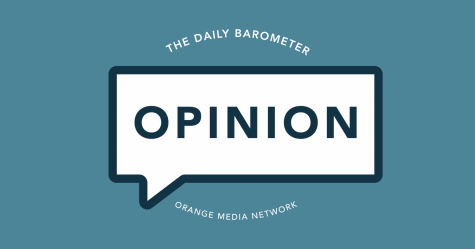Opinion: Women’s clothing rooted in sexism
May 14, 2018
Sexism leaks out pockets of gendered clothing.
The fashion realm for women is riddled with messages about femininity and gender, and squish consumers into arbitrary standards.
The industry fails to standardize sizing rubrics of clothing companies and pocket sizing between binary gendered clothing is disproportionate. These vices of the industry perpetuate stereotypes which are challenged by
third-wave feminism.
“I think that over the years, there has been more of a push for acceptance of how women look but there is still more room to grow in that. We see these beauty standards and everyone reacts to them in a different way,” Paige Phillips, a public health major, said in an email.
Kathy Mullet, an associate professor who teaches apparel production in the College of Business, stated that in the 1930s a case study project analyzed the various measurements of the female form.
The study concluded there were no common or predictable ways to anticipate the sizes of women, therefore the government allowed companies to come up with their own sizes.
This free reign in the form game went wild. According to Mullet, companies created sizing charts mirrored their average customer size. This issue hyperbolizes the female body as a form that cannot be understood or empirically defined, while also controlling brands and kinds of garments women can and cannot wear.
“You probably have favorite brands that fit you better than other brands do, and that’s because you might be more of that target market,” Mullet said.
Mullet stated that men’s sizing history started with uniforms for soldiers of the Civil War. Men were marked for height and weight as a means to determine their body dimensions, which was reduced to the sizes we see today, such as small medium and large, as well as the size notation of 32/34.
“Women’s clothing is more fitted than men’s. I think that’s why a lot of women like to shop in the men’s section. That’s because of the comfort level of men’s clothes,” Phillips said in an email.
Not only do women’s clothing companies use every thread to sexualize them, but they get away with immobilizing their customers by failing to address
their functional needs.
“There is already a huge thing about how women make less money than men and how women shouldn’t work in powerful positions. I know it sounds crazy, but I think that’s why men have bigger pockets because they have ‘more’ to do,” Phillips said in an email.
This pocket disparity has become widely discussed in lieu of the larger breeds of smartphones being released.
“This isn’t a new problem for women. Our skinny jeans have pockets, but there is no way an object bigger than a standard issue ID card fits in the front, and everyone knows that slipping a phone in your back pocket is an invitation for a treacherous dive into a toilet, or a backflip resulting in heartbreaking shatters,” Tanya Basu from The Atlantic said in an article.
Third-wave feminism started around the 1990s and liberated the chained up social souls of women and men alike. Aiming to challenge ideals and norms about gender and the roles associated with it, this wave has carried us into the 21st century and is breaking in the face of intolerance and lapping at the sands of gender and sex-based equality.
“The norms about gender and sexuality affect our clothing culture because people assume that if you are a certain gender that you should be dressing a certain way and things should fit a certain way,” Phillips said in an email. “Men and women should be able to wear whatever they want without being judged or thinking about whether or not they fit a standard. ”
People who wear women’s clothing deserve the right to be treated as an equal consumer as their male counterparts. Whether you are cis, trans or a nonbinary person, the need for inclusive and functional gender neutral clothing must be addressed and brought to light
in our society.





















































































































